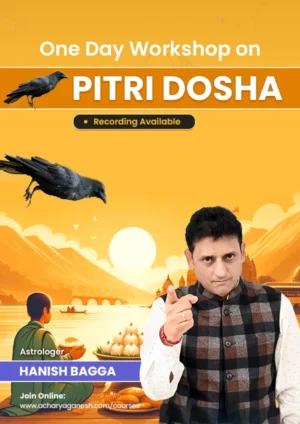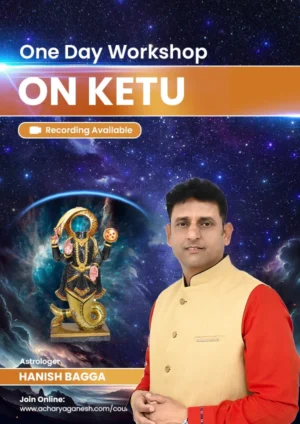Maha Shivratri, Lord Mahadev’s auspicious night
The annual celebration of Maha Shivratri, which honors Lord Shiva, is primarily a Hindu festival. This is the day that Shiva gets married. The day occurs either immediately before summer arrives or right at the end of winter (late February or early March). Praying to overcome darkness and ignorance in one’s life, this event is significant to Hindus. Wednesday, February 26th, 2025, will mark the auspicious occasion. It is also known as “The Night of Shiva” and is celebrated in most Indian states.
The South Indian calendar refers to Chaturdashi Tithi, which falls during Krishna Paksha in the month of Magha, as Maha Shivaratri. On the other hand, Maha Shivaratri is known as Masik Shivaratri in the month of Phalguna in the North Indian calendar. The naming convention for the lunar month varies between the two calendars. On the same day, though, both North and South Indians celebrate Maha Shivaratri. Devotees observe fast and worship Lord Shiva ritualistically.
Significance of Maha Shivaratri
Maha Shivaratri is a prestigious Hindu festival with profound spiritual meaning, representing the victory of light over darkness and challenges in life via fasting and meditation. The heavenly forces of Lord Shiva and Goddess Shakti have converged on this auspicious occasion. This day is also considered to be one of the days that the energies of the universe are strong and full of spiritual power. Celebration of Maha Shivaratri includes rituals at the shrine of Shiva, fasting, contemplation, and ensuring social peace. Shivaratri is a distinguishing feature of the Hindu religion since it takes place at nighttime, unlike most Hindu festivals that occur during the daytime. The Maha Shivaratri festival has its own tales and one of the eighteen Puranas – the Linga Purana – expounds upon the celebration. These narratives emphasize the observance of the Maha Shivaratri fast/vow and the worship of Lord Shiva and the linga, his symbol.
According to one of the myths it is believed that Lord Shiva danced the ‘Tandava’, the divine and destructive dance of creation on this particular night. Devotees chant Shiva prayers and recite scriptures, metaphorically participating in the almighty’s cosmic dance and commemorating his omnipresence. There is another tale that states that this day marks the marriage of Lord Shiva and Goddess Parvati. Due to this feature, the festival holds particular importance for married couples as well as single women looking for a suitable partner.
Vidhi Vrat
Devotees should only eat once on the day of Shivaratri Vratam, which is probably on Trayodashi. After completing their morning rituals on Shivaratri, devotees should take Sankalp (संकल्प) to observe a full day of fasting and eat the next day. During Sankalp, the devotees pledge for the control of oneself and seek Lord Shiva`s blessings for the uninterrupted completion of fast. Hindu fasts are strict, and to be able to complete them, people promise to have self control and seek God’s grace before fasting. It has been suggested that those who are devotees should have a bath in the evening on Shivaratri before doing Shiva Puja or proceeding to a temple. Thus the next day after doing Shiva puja and taking bath, the devotees should break the fast. For the purpose of obtaining maximum results from the Vrat, people should take their meals after the sunrise till the Chaturdashi Tithi gets over. One conflicting viewpoint states that believers should break their fast only after Chaturdashi Tithi. However, it is thought that Chaturdashi Tithi is the best time to perform Shiva Puja and Parana (पारण), or breaking the fast.
The Legend Behind Maha Shivaratri Vrat
Legend from Garuda Purana
For a separate story that highlights the importance of this day, refer to the Garuda Purana.This legend tells about a hunter who, after taking his devoted dog on a hunting journey, returned from the forest without finding anything. He was hungry and tired when he took a break beside a pond and saw a Shiva Lingam under a Bilva tree.He took some leaves from the tree in search of some relief, and ironically, some of them dropped onto the Shiv Ling. He sprayed water from the pond to wash his feet, accidentally splattering some on the Shiva Lingam. He bowed before the Shiva Lingam when one of his arrows slipped out of his hand as he was doing these acts. He had, without realizing it, finished the full Shiva Puja on the day of Shivaratri. After he died, angels from Lord Shiva’s troop came to guard him from the messengers of Lord Yama, who came to take his soul.
The story of Lubdhaka
A mythical tradition states that there once lived a poor man named Lubdhaka who was a devoted follower of Lord Shiva. He got lost in the wilderness and climbed up on a bel tree to get cover from the wild animals. He chose to pick one leaf and spend the rest of the night remembering Lord Shiva and reciting his name because the dreadful sounds of the animals were keeping him awake. On the next morning, when the sun rose, he saw that, in an attempt to ward off his fear, he had taken a thousand leaves from the Bel tree and placed them on the Shiva Lingam.Lord Shiva was pleased to see this and bestowed upon him blessings and safe travel.
The customs associated with Maha Shivratri are as follows;
1. Normally the followers do not eat food at all for the day; instead they are allowed a small quantity of milk and fruits.
2. In numerous shrines that are located on the sites connected with Lord Shiva, in the night the worshipers perform a special ritual called “Rudrabhisheka,” whereby they anoint the Lord with milk and offer prayers as well as sweets.
3. Meditation must be done on this day and chanting the mantra Om Namah Shivaya is advised to be chanted as often as possible.
4. Believers immerse themselves in the Ganges or any other similar river, water stream in the morning. Prostrating to the lord of the sun, to Shiva, and Vishnu is said in the tradition to sanctify. They wear new clothes after bathing and bring pots of water and poured on Shivling in the temple.
5. People decorate the linga with flowers and garlands. There are also some fruits and incense sticks also present. All these offerings to Shiva are meant with the intention of protecting humanity and the planet itself from negative forces.
6. The devotees; especially the women, first mix some turmeric in cow’s milk, then bathing the Shivalinga and praying for their husbands and sons. According to Hindu mythology, this day Shiva’s wife Parvati used to perform a prayer to eliminate any ill that may reach her husband Shiva.Ever since, ladies have considered Maha Shivaratri to be a lucky day.
Maha Shivratri celebrations across many states
Various cultures and regions celebrate the auspicious event in different ways.
1. The Annamalai temple in the state of Tamil Nadu celebrates the day. Lord Shiva devotees walk Girivalam, also known as Giri Pradakshina, a 14-kilometer barefoot route around the temple that lies on top of the hill.
2. Devotees from all over India come to the town of Mandi for the Mandi fair.In this particular day, it is believed that approximately two hundred Hindu gods and goddesses congregated in Mandi.
3. Girls from the region of West Bengal go to the temple of Tarakeswar to pray for a suitable spouse.
4. In Karnataka, during Maha Shivratri, there is an annual celebration of Sidhlingappa’s fair.
5. Maha Shivratri is also known as “Hayrath” or Vatuk puja in Kashmir, where local Hindu residents have a custom of distributing presents after the ceremony.
6. Lord Shiva is idolized in a number of temples; the most prominent of them are the Kalahasteswara Temple at Kalahasti, Andhra Pradesh; Umananda Temple in Assam located on peacock island in the middle of the Brahmaputra Rivers; Bhootnath Temple in Himachal Pradesh; Matangeswar Temple in Madhya Pradesh and Tarakeswar Temple of West Bengal.





























